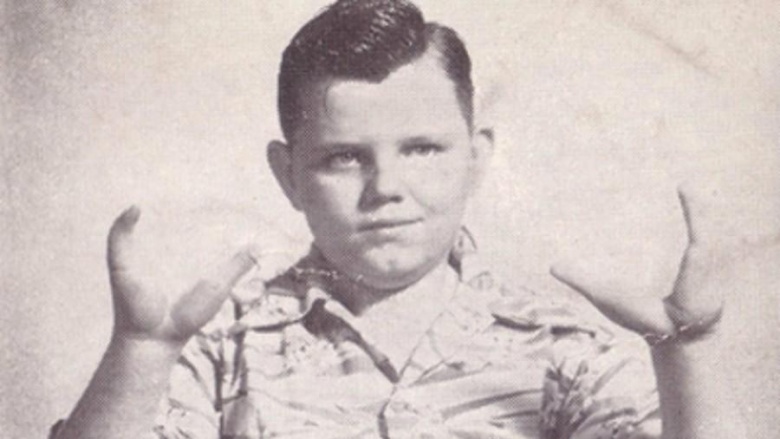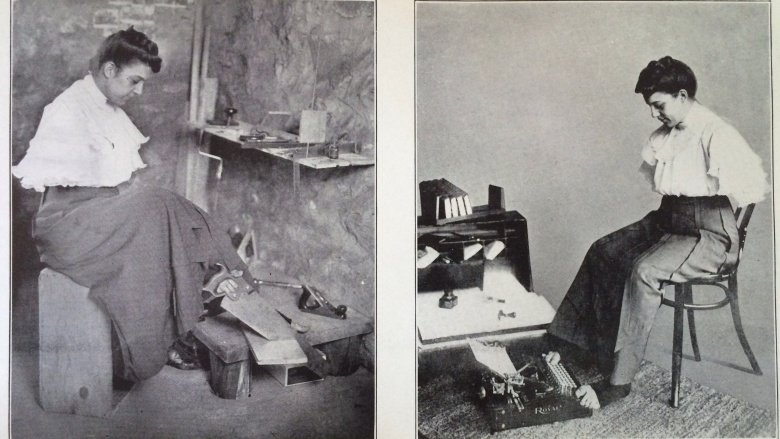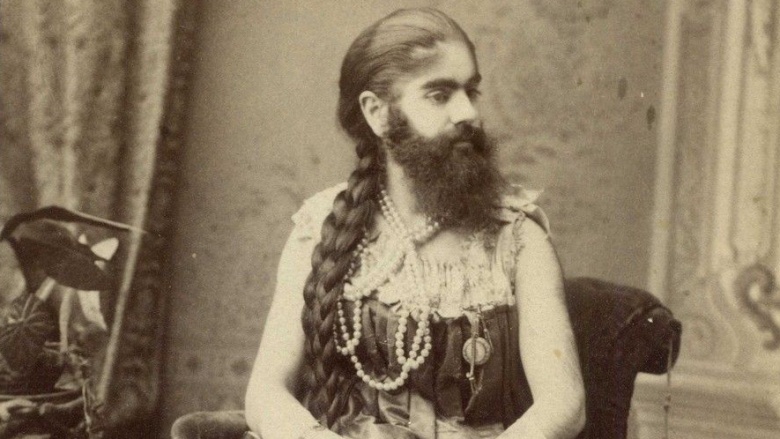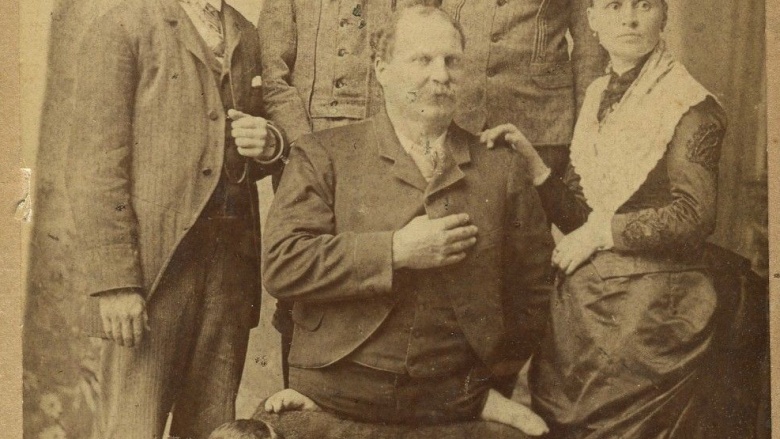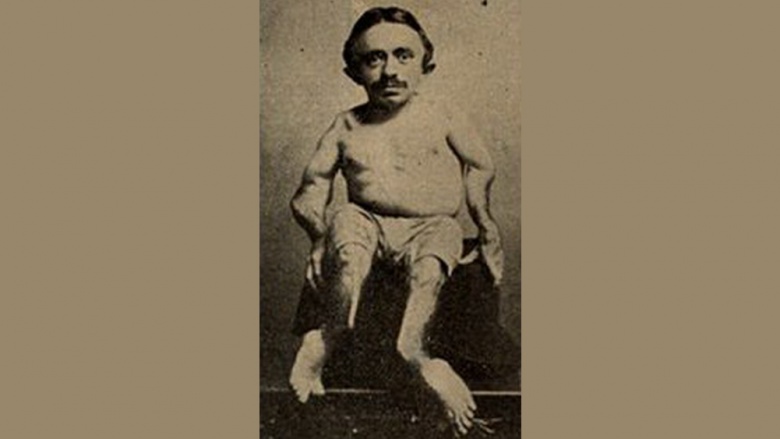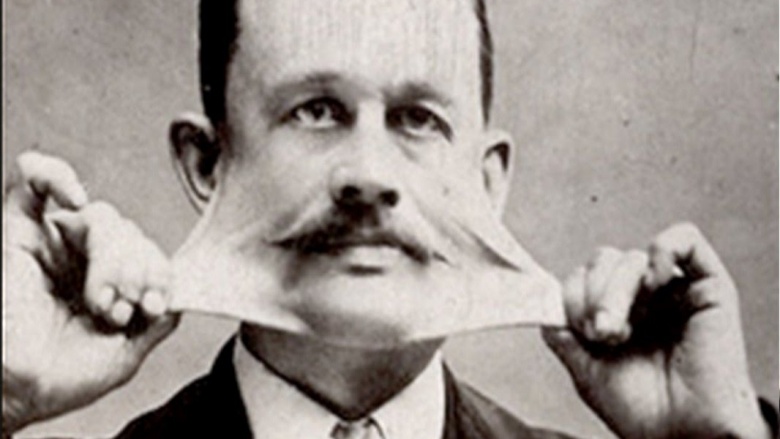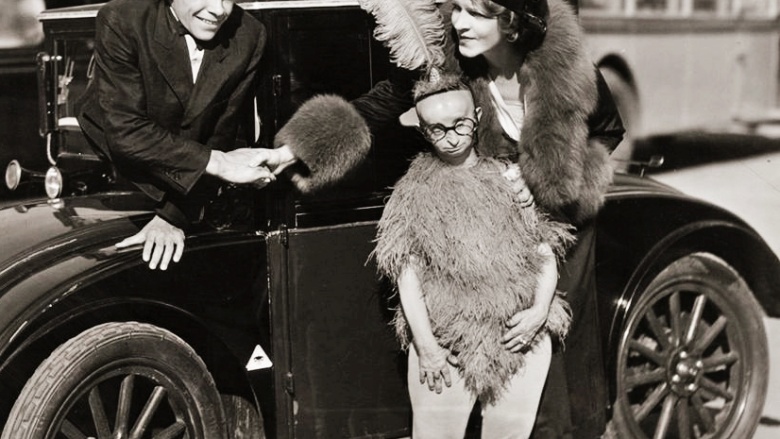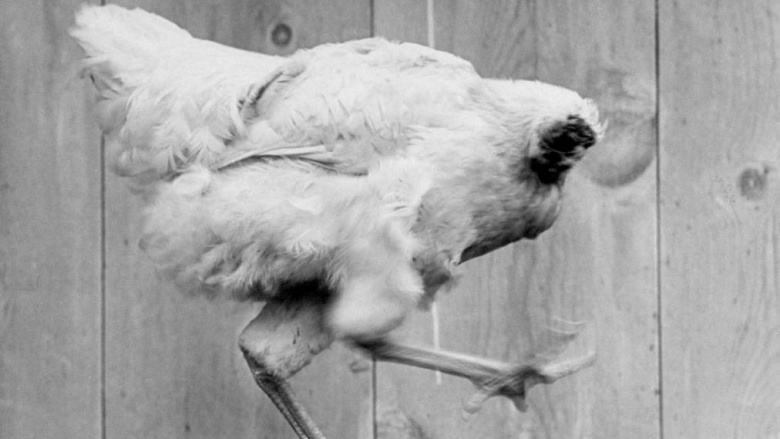Famous 'Freaks' And Creepy Carnival Acts From History
Before the days of modern medicine, people were sometimes forced to live with strange deformities. They would be left in institutions in many cases, but some would find their way to the circus or carnival, and their deformities would become the remarkable feature thousands would flock to see. Many of the people in these "freakshows" were born or injured in a way we probably wouldn't see in the 21st century, but back before television, anything unusual or odd became a sensational attraction at the carnival.
Grady Stiles Jr.: Lobster Boy
Many a traveling carnival featured a lobster person. Whether a boy, girl, a man, or a woman, you could usually find someone with hands like a lobster's claws. The first person to take up the mantle of Lobster Boy was Fred Wilson, who was born in Somerville, Massachusetts in 1866. He's far from the most famous.
Grady Stiles Jr. wasn't just a lobster man, he was also a horrible person. Part of the sixth generation in his family to be born with claw-like hands, he shot and killed his daughter's fiancé in 1979, on the day before the wedding. He had previously threatened the victim, Jack Layne, and was very vocal about keeping him from marrying his daughter. Due to his diagnosis of cirrhosis of the liver and emphysema, he was given a sympathetic sentence of 15 years on probation, which kept him out of jail. In 1992, Stiles was killed in a murder-for-hire plot driven by his wife, Mary Teresa Stiles, for a cost of $1,500. He was so hated in his community that nobody would agree to be his pallbearer, which may have been an indication as to why his wife might have wanted him dead. According to his son, he was also an abusive drunk and a racist.
The physical disorder that ran through the family is called ectrodactyly. A known ailment since the 17th century, it results in absence of the middle digit (or digits) of the hands or feet, which creates a claw-like look. There are variations in severity but it is rare, occurring in around 1 in 90,000-100,000 people. Ectrodactyly can be detected in utero, and there are surgical treatments to improve the function and appearance of the present digits. It can be painful and somewhat ineffective, so many parents opt not to have the surgery.
Kittie Smith: The Armless Dynamo
Kittie Smith wasn't born without arms — rather, she lost them in a horrible incident. Neighbors claimed that after standing up to her alcoholic, abusive father, she was punished by having her arms held to the top of a hot stove until they were so badly burned, amputation was the only recourse. (She told slightly different stories over the years.) The resulting surgery and amputations removed her arms three inches from the shoulder. She would remain in hospital care for another year, while her father avoided prosecution for lack of evidence. She then became a ward of the state.
While under the care of doctors, money was raised for her from donations and specialists were brought in to help her learn to use her feet in lieu of hands. It's likely that a circus performer was called in and, within a few years, Kittie was able to draw, paint, play the piano, and even embroider silk with just her feet. When she turned 21 and became too old for the state to continue supporting her, she began to distribute pamphlets telling her story, with an accompanied drawing she made and a request for a quarter in donation. By 1906, she had amassed more than $35,000 in quarters, and founded a company where she aspired to help children with similar disabilities.
She became very prosperous in Chicago, and was even the first woman in the city to cast a ballot. She also became the first woman to vote with her feet! Before she retired from public life, she went to work with Ringling Bros., Barnum & Bailey at Coney Island, where she would showcase her remarkable skills.
Annie Jones: The Bearded Lady
Most women who can grow a beard would probably shave it, or do just about anything to conceal their facial hair. That cannot be said for Annie Jones, who embraced her glorious beard, and became the original Bearded Lady.
Jones was born with a chin full of fine hair, which horrified her parents, who were likely expecting only a small amount of hair on the top of her head. Though they were originally freaked out, they realized her peculiar condition could be a decent money-maker. By the age of one, she was taken to New York to be featured in P.T. Barnum's museum as The Infant Esau. Jones was such a hit, Barnum offered her mother a three-year contract with a weekly salary of $150, which she accepted. Within a year, the child was kidnapped, with the hopes of using her to earn money in the same manner as Barnum. She was quickly found and returned to her mother, who remained by her side for most of her 36-year career.
To be clear, all women grow facial hair (they are mammals, after all). For just about every woman on the planet, this hair is fine and colorless so it cannot be seen, but for some, they grow beards comparable to men. This can be caused by a number of issues, from hormonal imbalances to a rare birth defect called hypertrichosis lanuginosa, formerly known as werewolf syndrome. In Jones and other "bearded women," it's likely a hormonal problem called hirsutism (the presence of hair in places that would be considered normal for men, likely linked to testosterone production). Shaving is likely the cheapest solution, unless the lady wishes to follow in the profitable footsteps of Mrs. Jones.
Eli Bowen: The Legless Acrobat
Eli Bowen was born in October 1844 to a family with nine other children, only Eli was born without legs, and with feet attached directly to his pelvis. The feet were disproportionately-sized in relation to his body, so they were essentially useless. Even with his abnormality, Bowen strove to live a normal life. He worked on the family farm, and aspired to become an acrobat. Without legs, it became necessary for Bowen to walk by holding onto thick, wooden blocks, which he used as shoes. He would lift his body up and walk this way, which significantly built up his upper-body strength.
When he was 13, he began his professional career doing wagon shows, until he finally came to tour with Barnum & Bailey in Europe. He became world-famous for his routine: climbing, balancing on, and spinning around a pole. He was so popular that he was soon earning as much as $100 per week (which equates to nearly $3,000 in 2016). Bowen married, had children, and continued to perform well into his eighties. He died in 1924 from complications of pleurisy.
Bowen was born with a rare birth defect called phocomelia, which results in the malformation of one or more limbs. The condition is rarely passed genetically to offspring due to its recessive nature, and none of Bowen's four children were born with it. During the 1960s, a drug called Thalidomide was linked to the birth of thousands of infants with phocomelia.
Samuel Parks: The Fearless Frog Boy
Samuel Parks was billed as the Fearless Frog Boy, though he didn't begin his career as an oddity until the age of 19. His diminutive stature and misshapen limbs made him an attraction where people would pay to look at him sitting in a chair. His legs were quite twisted and bowed, which is where the frog part of his name came from.
He lived a life of tragedy, having married in 1906 only shortly before his manager fled and left him bankrupt. He recovered from this, had a child, and rebuilt his fortune, but tragically lost his wife and second child in childbirth. Dejected, he continued touring until he finally met Helen Himmel, also known as Princess Wee-Wee, the shortest woman in the world. The pair married and had a child in 1911. After retiring from show business, he owned and operated a newsstand in El Paso, Texas, until his death in 1923 at the age of 49.
Parks suffered from a condition called osteogenesis imperfecta. Osteogenesis imperfecta results in a person being born with extremely brittle bones, and Parks' appearance was due to his bones constantly breaking throughout his lifetime. By the time he was 35, Parks recalled breaking his bones 58 separate times. People born with the condition tend to inherit it from their parents, as it's a dominant genetic defect. There is no known cure, and current treatments involve the surgical correction of deformities.
Felix Wehrle: Elastic Skin Man
Felix Wehrle was known as the Elastic Skin Man, due to his amazing ability to stretch his skin to great lengths. He was also a skilled contortionist, able to completely bend his fingers backwards. He traveled with Barnum & Bailey all over the world performing his act, stretching the limits of his skin. He would then perform various contortionist acts, bending his body in unnatural ways. Wehrle was a popular act in the late 1890's, and worked with others who shared his condition.
Wehrle was afflicted with Ehlers-Danlos Syndrome (EDS). EDS is a combination of several genetic connective tissue disorders, which can vary from being able to stretch the skin out away from the body beyond what's considered normal to more severe issues with joints leading to chronic pain and osteoarthritis early in life. There is no cure for EDS, but treatment helps in alleviating painful symptoms. It affects around 1 in 5,000 people across the world, and was first documented by Hippocrates more than 2,000 years ago.
Hadji Ali: The Great Regurgitator
Have you ever been to a party and someone came out from behind a curtain to vomit strange objects all over the place? If so, you either went to college, or you saw Hadji Ali, The Great Regurgitator, in action. Ali had a remarkable ability to swallow nearly anything and then regurgitate it in whatever order he chose. Often called the Egyptian Enigma, Ali was born in 1892 and became a worldwide sensation by the 1920s.
Professional regurgitation goes as far back as the 17th century, but was mostly forgotten by the time Ali came onto the scene. He brought new elements into the act and had the ability to swallow incredible amounts of items and water. After swallowing up to three fishbowls full of water, he would then regurgitate it in a six-foot arc across the room into a basin. His act often ended by his downing a gallon of water, followed by a gallon of kerosene. With both liquids in his stomach, he would regurgitate the kerosene, ignite it, then douse it with the following supply of regurgitated water. There is some science behind this feat, and if you recall your high school science classes, you'll remember that kerosene floats on water.
There is no known genetic condition that allowed Ali and those like him to achieve such miraculous feats. It is believed that he, through a great deal of practice, was able to manipulate the muscles of the stomach and clench his throat at will. Theoretically, anyone with the desire (and love of puking) could train and become this generation's Great Regurgitator! Just be sure to put a tarp down on the carpet first.
Minnie Woolsey: Koo Koo the Bird Girl
The sad story of Minnie Woolsey begins with a girl who was severely developmentally disabled growing up in a Georgia asylum. As was common at the time, children born with strange disabilities like Minnie's would end up abandoned and become wards of the state, often living in asylums. She was born nearly blind and toothless, with a large head, beak-like nose, stunted growth, and wore incredibly thick glasses. She was rescued from the asylum by an unknown showman hoping to cash in on her appearance. Originally billed as Minnie-Ha-Ha, she was cast in the 1932 film Freaks, and Koo Koo the Bird Girl was born.
Dressing as Koo Koo, she wore a feathery costume with a plumed cap and chicken-like shoes on her feet, to help finalize the look of the bird girl. She continued to work for a number of years all over the country and ended up in Coney Island, where she was billed as The Blind Girl from Mars.
Woolsey was born with an extremely rare condition called Seckel syndrome, also known as bird-headed dwarfism. The defect is recessive and happens due to chromosomal defects, which can lead to Woolsey's condition, as well as microcephaly and a host of different side effects. Seckel Syndrome was first described in 1960, and only 100 cases have ever been documented.
Mike: The Headless Chicken
We've all heard the reference to acting like a chicken with its head cut off, but Mike decided to take it literally. After going under the farmer's axe and losing his head, he lived for another 18 months, and even toured the countryside with a carnival as Mike the Headless Chicken.
Miracle Mike, as he was sometimes called, lost his noggin when the axe came a-whacking. The farmer then left him to his wanderings, as he ran around without a head. When he came back the next day, ol' Mike was still walking around, preening his feathers, and pecking for food ... all without a head! In order to keep him alive and earning money on the circus circuit (25 cents a peek), he was fed grain and water through the very obvious hole in his neck. He kept on going for a year-and-a-half, even gaining 2.5 pounds before he finally died. Amazingly, he didn't die due to stumbling down a cliff, or headlessness finally catching up with him, but rather because people are dumb. Part of his care routine involved clearing mucus and food from his throat — one night, his caretakers misplaced the syringe. Unable to clear Mike's windpipe, he choked to death.
The reason Mike was able to live without a head was due to the way a chicken's brain is set at a 45 degree angle between their eyes. If the axe falls in such a way that the forebrain is severed, the remaining portion of brain is able to continue on. In Mike's case, his jugular vein was never severed and he never bled to death, which is what terminates most birds in his precarious position.

